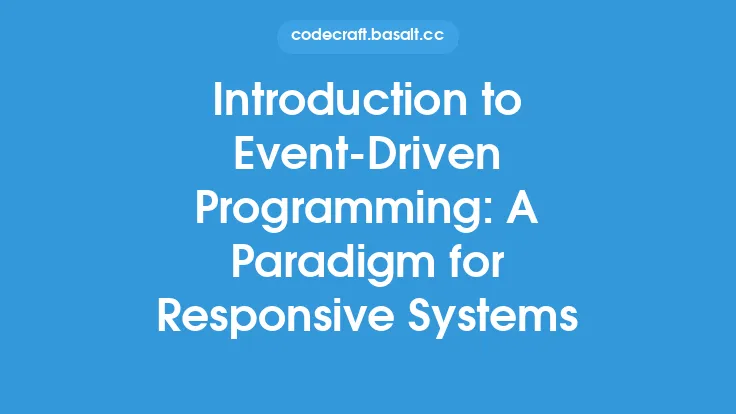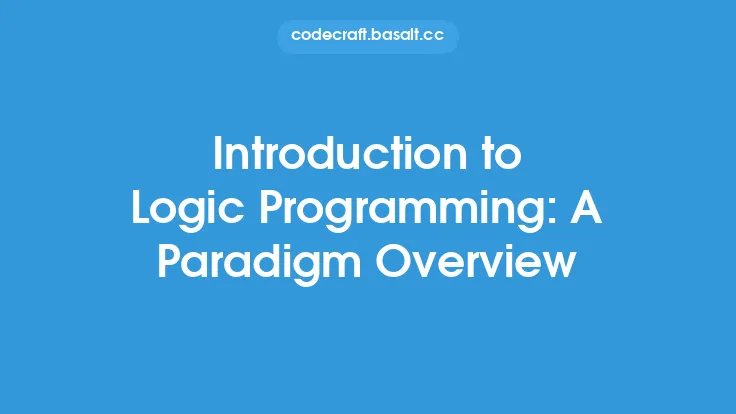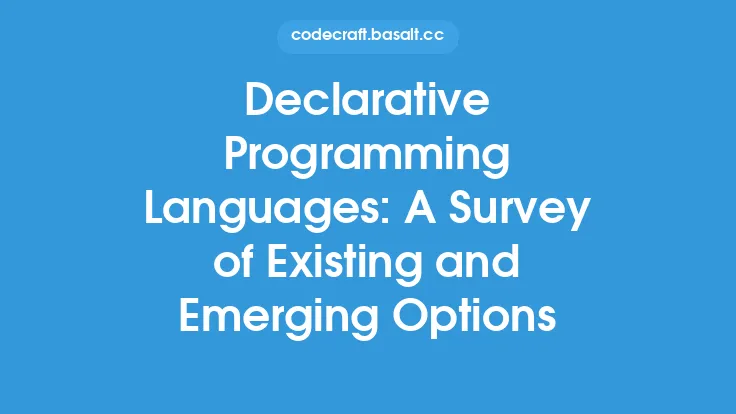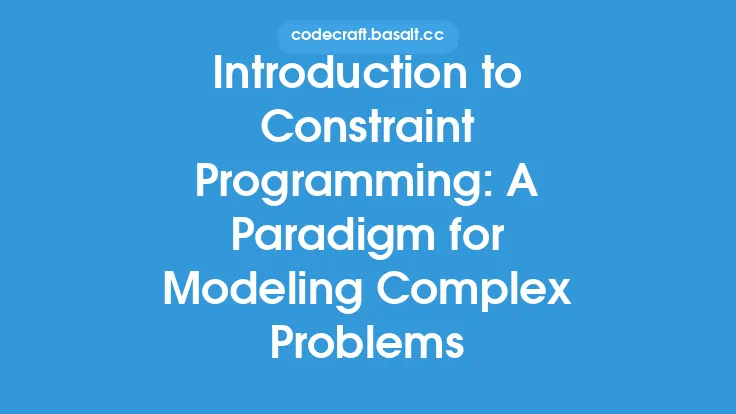Declarative programming is a paradigm that has been gaining popularity in recent years due to its ability to simplify software development and improve code readability. At its core, declarative programming is a style of programming that focuses on specifying what the program should accomplish, rather than how it should accomplish it. This is in contrast to imperative programming, which focuses on the steps the program should take to achieve a specific goal.
History of Declarative Programming
The concept of declarative programming has been around for several decades, with its roots in formal logic and database query languages. The first declarative programming language, Prolog, was developed in the 1970s and was based on formal logic. Prolog allowed programmers to specify what they wanted to achieve, rather than how to achieve it, and the language would figure out the steps to take. Since then, many other declarative programming languages have been developed, including SQL, HTML, and CSS.
Key Characteristics of Declarative Programming
Declarative programming has several key characteristics that distinguish it from imperative programming. One of the most important characteristics is the focus on specifying what the program should accomplish, rather than how it should accomplish it. This is achieved through the use of declarations, which are statements that specify the desired outcome. Declarative programming languages also typically use a more abstract and high-level syntax, which makes it easier to write and maintain code. Another key characteristic of declarative programming is the use of recursion, which allows programmers to break down complex problems into smaller, more manageable pieces.
Declarative Programming Models
There are several different models of declarative programming, each with its own strengths and weaknesses. One of the most common models is the functional programming model, which is based on the concept of pure functions. Pure functions are functions that have no side effects and always return the same output given the same input. This makes it easier to reason about the code and predict its behavior. Another common model is the logic programming model, which is based on formal logic. Logic programming languages, such as Prolog, allow programmers to specify what they want to achieve using logical statements, and the language will figure out the steps to take.
Declarative Programming and Imperative Programming
Declarative programming and imperative programming are two different paradigms that have different strengths and weaknesses. Imperative programming is better suited for tasks that require a high degree of control and precision, such as operating system development or embedded systems programming. Declarative programming, on the other hand, is better suited for tasks that require a high degree of abstraction and flexibility, such as web development or database query optimization. Many modern programming languages, such as JavaScript and Python, combine elements of both declarative and imperative programming to provide a more flexible and expressive programming model.
Advantages of Declarative Programming
Declarative programming has several advantages over imperative programming. One of the most significant advantages is improved code readability. Declarative programming languages typically use a more abstract and high-level syntax, which makes it easier to understand the code and predict its behavior. Declarative programming also makes it easier to maintain and modify code, as the focus is on specifying what the program should accomplish, rather than how it should accomplish it. This makes it easier to make changes to the code without introducing bugs or unintended side effects.
Challenges of Declarative Programming
Despite its advantages, declarative programming also has several challenges. One of the most significant challenges is the learning curve. Declarative programming requires a different mindset and way of thinking than imperative programming, and it can take time to adjust. Declarative programming languages also typically have a more abstract and high-level syntax, which can make it harder to debug and optimize code. Additionally, declarative programming may not be as well-suited for tasks that require a high degree of control and precision, such as operating system development or embedded systems programming.
Conclusion
Declarative programming is a paradigm that has been gaining popularity in recent years due to its ability to simplify software development and improve code readability. By focusing on specifying what the program should accomplish, rather than how it should accomplish it, declarative programming languages make it easier to write and maintain code. While declarative programming has several advantages, it also has several challenges, including a steep learning curve and potential limitations for tasks that require a high degree of control and precision. As the field of software development continues to evolve, it is likely that declarative programming will play an increasingly important role in shaping the future of programming.





